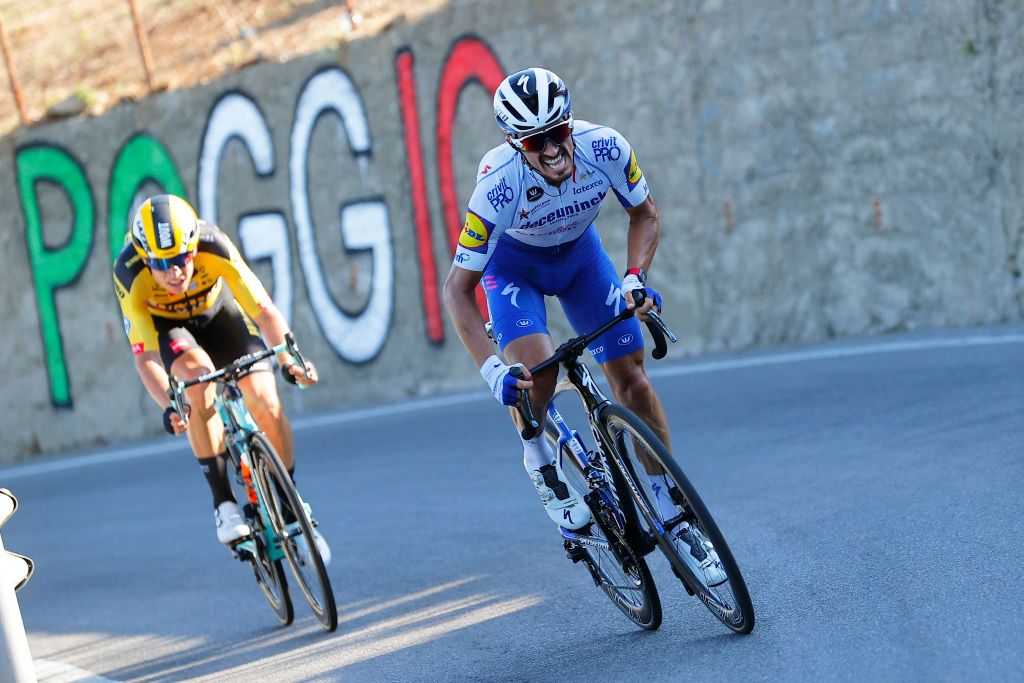Of the five Monumental Classics of cycling, every race has its iconic points, whether they’re climbs, cobbled sectors or famed historical locations.
Paris-Roubaix has the brutal Trouée d’Arenberg, the Tour of Flanders has the punishing Koppenberg, and so on. The first Monument of the season, Milan-San Remo, doesn’t offer up anything quite as fearsome as those challenges, but it does have one icon.
Nestled at the end of a 300km marathon of a ride, the Poggio di San Remo is the decisive spot on the Milan-San Remo route and the most famous part of the longest race on the calendar.
Measuring in at 3.7km and an average gradient of a mere 3.7%, the hill lying to the east of San Remo isn’t exactly a scary prospect, even for a Sunday club run. But on San Remo Saturday, at 37kph after seven hours in the saddle? It’s a very different story.
In a race where, frankly, little can happen for hours on end, the Poggio is the must-watch moment of the day – its importance to the outcome of Milan-San Remo standing above and beyond similar decisive moments of other races.
The Poggio takes on outsized importance given that it is, after all, only a short stretch of road – just 3.7 kilometres in total – in the longest one-day race on the calendar. The battle for position leading up to the right-hand turn off the Corso Giuseppe Mazzini, and the blistering pace set on the way up, is testament to that.
And while the race has been run since 1907, it was only in 1960 that the Poggio was added, thanks to Vincenzo Torriani, the man who put the Muro di Sormano on the Il Lombardia map and who organised the Giro d’Italia from 1946 to the early 1990s. Milan-San Remo literally wouldn’t be the same without the legendary race boss.
At last year’s race, Matej Mohorič demonstrated the importance Torriani’s legacy with a devastating, dropper post-aided solo attack on the way down, having been among the select lead group over the top.
Two years earlier in the pandemic-delayed edition, the all-star pairing of Wout van Aert and Julian Alaphilippe sprinted for the line on the Via Roma after escaping over the top. In 2018, Vincenzo Nibali soloed to the win after attacking midway up the hill, a rare feat in the modern race even if the mass sprint finishes of years gone by now seem consigned to…
Click Here to Read the Full Original Article at CyclingNews RSS Feed…

